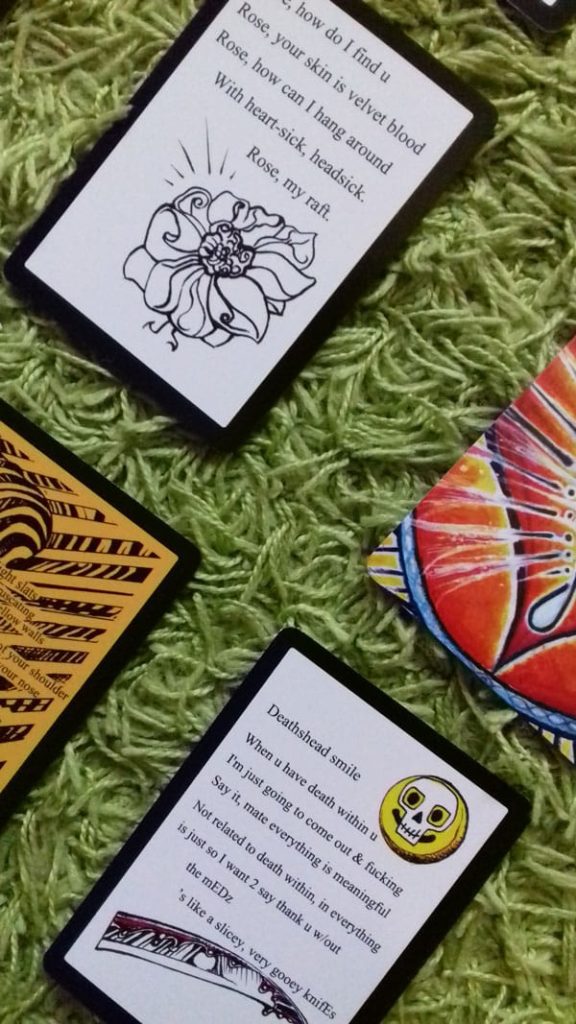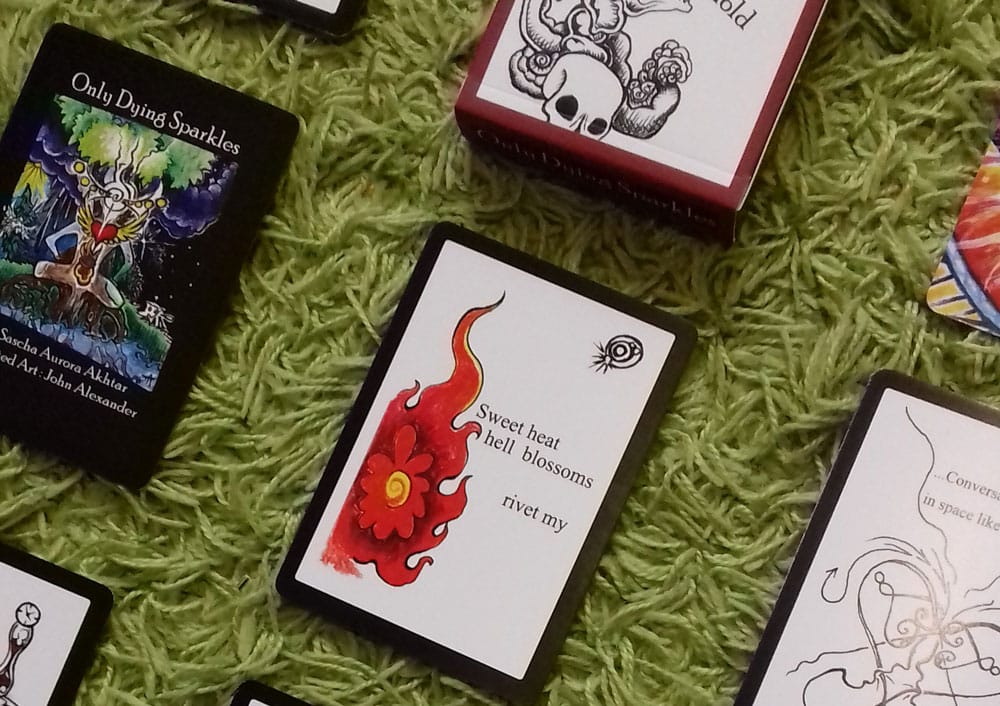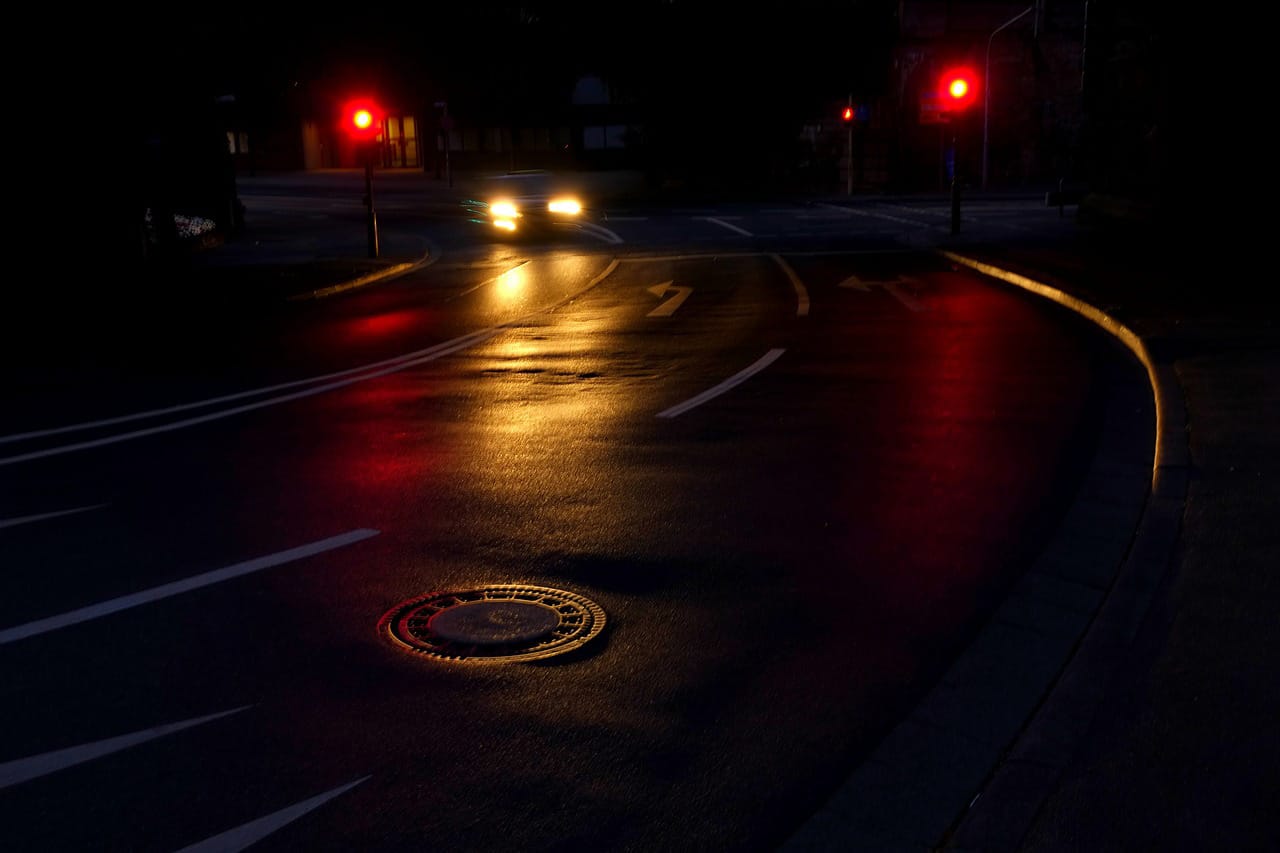A Q&A with poet Sascha Aurora Akhtar and illustrator John Alexander Arnold about Only Dying Sparkles, a new project combining poetry, illustration and tarot cards.
After my recent post about an interesting new literary form, here’s another fascinating variation: a new project combining poetry, illustration and tarot cards. The collection is presented as a deck of cards and explores issues of mental health.

I was curious to know more about this project, so here’s a quick interview I did with the creators, poet Sascha Aurora Akhtar and illustrator John Alexander Arnold.
Sascha Aurora Akhtar originates from Pakistan, and was educated there and in the USA. Her debut poetry collection, The Grimoire of Grimalkin, was published in 2007 and greeted as “a contemporary masterpiece”, with the British newspaper The Guardian naming Akhtar one of the top twelve poets to watch.
John Alexander Arnold connects with the Earth’s elements through daily practices in organic horticulture, wild crafting & mandalic composition, from which his art is derived. He lives and practices in Portland, Oregon.
‘Know Thyself’ is the first principle for healing. These poems are part of Sascha’s journey to personal healing and she hopes her readers will find solace in her poetry also. The collection, called Only Dying Sparkles, was launched on 1st December is available at ZimZalla press.
So, poetry and tarot cards… Where did the idea come from, and why did you choose this unusual medium?
Sascha: My grandmother, Bernadette Coates, was a well-known tarot reader in our city. I grew up around tarot. in fact, now my mother is a well-known tarot reader. With this deck of cards, I think the tarot vibe came through all on its own.
I had a number of brief poems that I wanted to be published with drawings, where each one was an object. Then John came into it, Tom Jenks and before we knew it we had a deck of cards. I do not wish to presume on the centuries old art of Tarot, as we have adhered to no tarot traditions, but when I received the proof pack, it felt so magical.
I feel John’s work is what elevates each card. His transcendental energy is in every card. I would say Rhapsodomancy is a more accurate term for what we have put forth with Only Dying Sparkles.
JohnAlex: I have always wanted to make a set of tarot cards and may someday at least illustrate one based on the traditional decks; the writings of Carl Jung about tarot and dreams informed much of my bachelor’s work in anthropology.
I have always been fascinated by playing cards, Ouija boards, tarot, and other traditional forms of augury and divination as well as bibliomancy. I also have a lifelong fascination with small scale printing including toy packaging, greeting cards, post cards, hand bills, posters, business cards, etc. I find these contain a wealth of fine and folk art while preserving a diverse record of modern culture.
This project deconstructs the format of traditional tarot to a freer form of bibliomantic divination while aluding to more modern trading cards, opening this printing and viewing format wide to future collaborators and individual artists.

Tarot cards are small! Was it difficult to condense the poems onto such small “pages”? How did the writing process differ, compared with your previous poetry books?
Sascha: I think John is actually the one you need to ask about this. He was the one who had the real challenge. I am very much a poet of form, and utilising the page to lay down poetry as art, so because I was already working with brief poems this was not as difficult. It was challenging with the slightly longer ones, and in some cases I decided to just break them into two and never mind if people picked one half of the card not knowing there was another bit.
In fact, I enjoyed opening myself up to the process. There is a secret “clue,” actually. The poems that are linked have a small symbol on them that matches its “missing” partner. In this way there are “twin flame,” poems in the deck in the same way John & I are twin flames! And yes, defo this is a total departure for me as a writer but also makes total sense to me in terms of my own evolution. I have been working towards putting image & text together for a while now.
JohnAlex: The drawings were initially smaller which complicated the editing process. Sascha can speak more to that. However, the small scale of the drawings made it easier for me to work in mobile scenarios; the work would not have been accomplished if this were not the case as I was traveling back and forth from Portland, Or to London and relocating my home and studio within the Portland area while doing it.

What kind of experience do you want readers to have with Only Dying Sparkles? What do you want them to get out of it?
Sascha:I have no real expectations of anything as a life strategy, in general. It is part of my spiritual practice. My vision of this is that it finds who it needs to and gives people what they need, at the right time. Well maybe that’s not totally true, because I do hope that people who suffer from emotional imbalances, depression, anxiety may resonate with my voice.
Part of my “imbalance” is an obsession with Death. It really is a sickness sometimes. I think I am going to die constantly. When I was younger I used to write a will the night before my birthday, convinced I would not make it to 14, 15, 16. I am not kidding. I really really believed it. At least that has stopped!
What it has developed into is still part irrational anxiety but also part spiritual understanding. In Buddhism and in Islam both, well in all the religion-religions really, as well as pagan beliefs and Mexican cultural beliefs, Death is in the open. It is just as much a part of life as life. My “imbalances” have actually led me to a deeper understanding of these things. Perhaps those with the deck will experience similar things? Since almost every poem either has the word “death” in it or refers to such.
JohnAlex: I infused my drawings with themes of love and light to counterbalance the dark psychological roots of and subject matter addressed by the poems; I hope the cards help people drive through their own inner darkness to arrive at the bright and loving truths at the other side.
Could you talk about the vanitas tradition and how your work fits in with that?
Sascha:So this is really interesting to me with my issues that there is a whole tradition in art that is dedicated solely to an understanding of the fleeting nature of life! Often there would be skulls in the images to. Those pieces were like a focus point for contemplation. A space to stop & contemplate. Amazing! Our work is strictly in the Vanitas tradition, skulls & all, but very much of the NOW, and perhaps a little more punk…
JohnAlex: The Vanitas tradition incorporates detailed small scale work into a larger visual narrative and laid the interpretive groundwork for modern forms of print media like comics and graphic novels, which inform many of my drawings.

The project explores issues of mental health. How does it do that? Do you have personal experience in this area, and if so, how do your poems draw on that experience?
Sascha: I think I covered some of it. To which I will add. Some of the poems like the one that begins “My days have been blown wide open..” refers to receiving the news that my stepfather had cheated on my 50+ year old Mother and they were splitting up, and Deathshead Smile is about having a desire to be dead or hurt oneself or kill oneself lurking in one’s consciousness.
The deck is both heavy and light. Like when we accept all things in life, allowing the good & the shite to exist – recognising how deep and dark our emotions can be, but living anyway.
Did you run across any challenges in producing the cards? What were the logistics of designing and printing/packaging the cards like? Have you done anything like that before?
Sascha: I have worked on large design products and have decades of Photoshop experience which was lucky. If we didn’t have that I’m not sure how this would have happened.
The greatest challenges were when the work got digitized and having to then take John’s work and retain the integrity, from a 60 x 120 mm size (!). There were all kinds of mix-ups with wrong sizes, wrong specs floating around. Seriously. It wasn’t pretty!!
But luckily, the tarot printers over at Ivory Arts have a Photoshop wiz, Zsuzsa. I am grateful for her. I needed someone else who was familiar with Photoshop to take the deck up from where my skills ended. So that’s the nerdy tech issues.
Where can people buy Only Dying Sparkles?
Sascha: I am thrilled that the BookArtBookshop, run by the amazing Tanya Peixoto, will be carrying some decks. It is on Old Street in London. There are other places around the Birmingham, Manchester area that we are going for too, like art cafes.
The physical spaces would be good to check in a few months though like Travelling Man that has a small press section and sell zines and illustration work, Nexus art café- Manchester and Pen wars in Partisan Manchester, a zine & arts pop up shop. Five Leaves in Nottingham. I would also love for Burley Fisher to carry some decks so we are working on that.
It is important to remember though that small presses run on passion and dedication, as ZimZalla press does. Often the best way they can promote the work of the artists and writers they take on is to offer online sales. It is always best to buy directly from publishers in the case of poetry. John has some plans to have decks available in Portland, U.S.A. I’m pretty sure we are shipping worldwide online.
Only Dying Sparkles was launched on 1st December 2018 and takes its name from a Paul Celan poem (translated into English) of the same name. It is available at ZimZalla press.




There are 4 comments
This is a very interesting interview. Something that struck me was the way that Sascha found a way to partially cope with anxiety through art. I think that dealing with such challenges is the source of so much art,
This project sounds so creative and different.
I think you’re right, Brian – there are so many examples of that throughout history. And because art and literature allow us to communicate deeper realities to each other, maybe readers with similar experiences can get some help from the project. At least it helps to know you’re not alone.
How fascinating! I should check this out!
Hi Rachel, Yes, it’s an interesting concept, isn’t it? I love any attempt to extend literature into new and interesting forms, especially while dealing with serious issues at the same time.